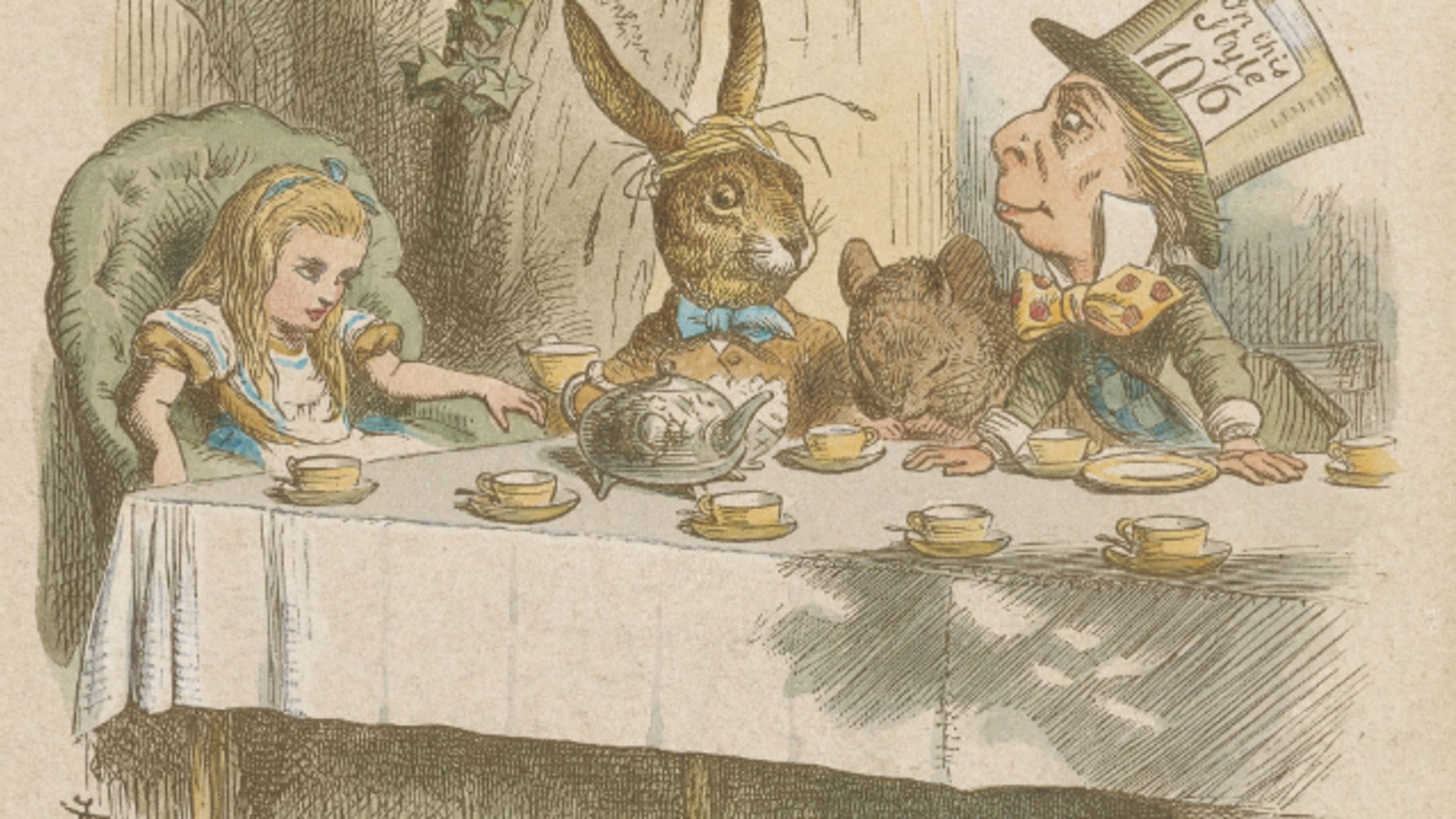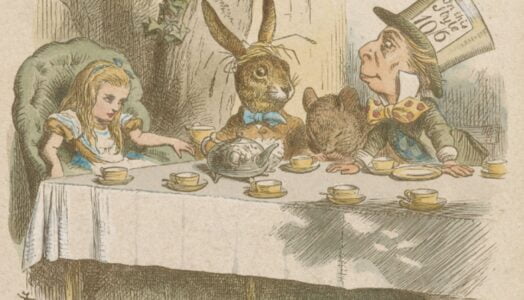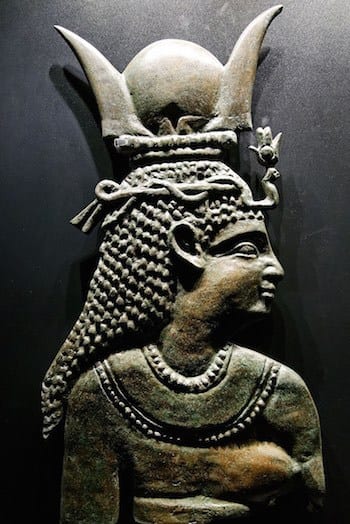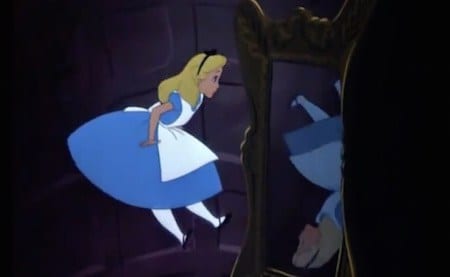A book published by Lewis Carroll (a pseudoname for English author Charles Lutwidge Dodgson) on November 26, 1865, three years after Dodgson and the Reverend Robinson Duckworth rowed in a boat, on 4 July 1862, up the Isis with the three young daughters of Henry Liddell, including 10 year old Alice Liddell from whom Alice is named. It tells of a girl named Alice falling through a rabbit hole into a fantasy world populated by peculiar, anthropomorphic creatures. The tale plays with logic, giving the story lasting popularity with adults as well as with children. It is considered to be one of the best examples of the literary nonsense genre. Its narrative course and structure, characters and imagery have been enormously influential in both popular culture and literature, especially in the fantasy genre.
Drug Culture Symbolism?
Alice’s Adventures in Wonderland is, on one level at least, the story of a girl who disappears down a rabbit hole to a fantastic place full of bizarre adventures. The heroine follows a talking white rabbit, meets the Queen of Hearts and plays croquet using flamingos as mallets. Since the 1960s there has been a trend for readers to identify an underlying drug theme in the book.
The Cheshire Cat disappears leaving only the enigmatic grin behind. Alice drinks potions and eats pieces of mushroom to change her physical state. The caterpillar smokes an elaborate water pipe. The whole atmosphere of the story is so profoundly disjointed from reality – surely drugs must have had an influence? After all this was the era of legal opium use.
Jefferson Airplane’s 1967 psychedelic anthem White Rabbit runs with the drug theme.
“When the men on the chessboard get up / And tell you where to go / And you’ve just had some kind of mushroom / And your mind is moving low / Go ask Alice, I think she’ll know.”
The Matrix provides a film reference point. “You take the blue pill, the story ends, you wake up in your bed and believe whatever you want to believe. You take the red pill, you stay in Wonderland, and I show you how deep the rabbit hole goes.”
The drug link is a homespun thing. You’ll find it on a host of random forums. But the experts are usually skeptical. Carroll wasn’t thought to have been a recreational user of opium or laudanum, and the references may say more about the people making them than the author.
“The notion that the surreal aspects of the text are the consequence of drug-fuelled dreams resonates with a culture, particularly perhaps in the 60s, 70s and 80s when LSD was widely-circulated and even now where recreational drugs are commonplace,” says Dr Heather Worthington, Children’s Literature lecturer at Cardiff University.
“It is the deviant aspects that continue to fascinate because the text is unusual, innovative, and hard to grasp so turning to the author offers simplicity and excitement simultaneously.”
The mushroom is “magic” only in the context of the story. And the caterpillar is merely smoking tobacco through a hookah.
Who is Lewis Carroll?
Let’s first take a brief look at the author to the original Alice’s Adventures in Wonderland tales: Lewis Carroll. Here we have a man who was well versed in the sciences as a mathematician. Following true to more famous occultists from the Age of Enlightenment era such as Isaac Newton; it appears that Carroll explored both the natural world and the spiritual. He was a member of the Society for Psychical Research (SPR) where he further explored thought transference and mind reading (which we see from the Caterpillar when he answers Alice’s question about eating the mushroom).
The SPR was also known for having other famous intellects like Sigmund Freud and Carl Jung. The SPR explored various phenomena, almost like the first true ghost hunters. They conducted seances and often times debunked paranormal activity (including some claims of Helena Blavatsky- the voice piece of Theosophy that inspired Frank Baum’s Wizard of Oz).
Carroll most definitely had an interest in the paranormal and that is evident in his books about Alice. In fact we hear the White Queen telling us that she can remember future events- which is another example of paranormal activities such as divination. Carroll recited his tale to a girl named Alice Liddell (whom the stories would be named after). When Carroll first wrote it down he called it Alice’s Adventures Underground which should alert us to occult-ritual initiation.
Traditionally speaking; all initiates into the secret societies and mystery schools of ancient Egypt, Greece, and Rome were explained the teachings of the occult through a ritual that forced the initiate to contemplate their own death. Often times the initiate is duped into believing they would actually be killed- which separated those that were prepared for initiation from those that weren’t.
One way these groups would have the initiate understand the occult teachings was to have them literally go underground. This simulated death and that is allegedly why the Great Pyramids had underground burial rituals. The initiate would stay “dead” for three days and “resurrect” as a new candidate into the ways of the occult. The candidates could also enter into an altered state where their spirit would traverse the cosmos and come back as a new person. We’ll talk more about the usage of drugs later, because it also plays a role in Wonderland.
Entering into the underground is where the initiate’s journey begins. They are tested while also guided through various concepts. This is why we see Alice descend into a well when she starts her initiation experience.

The shadow hanging over anyone reading the story is the issue of Carroll’s sexuality. A successful photographer, many of his surviving shots are of children, often semi-dressed or naked. To many modern minds, a man who regularly formed friendships with young girls is inherently suspicious. “Lewis Carroll’s personal life intrigues adult readers because Alice in Wonderland is a text for children but the notion that the author photographed, however innocently, young girls in a state of undress is, to our modern eyes, unpalatable,” says Worthington.
“That Alice was based on a child that Carroll knew adds yet another layer of interest, or suspicion, depending on how you look at it.”
But Carroll was living at a time when childhood innocence was being forged, influencing how children were represented in 19th Century literature aimed at them. Carroll’s interest in young female innocence is explained by some of the experts as one that invoked desire, but not necessarily sexual.
Jenny Woolf, author of The Mystery of Lewis Carroll, agrees with this theory.
“Girls offered him a non-judgemental and non-sexual female audience and he opened up to them. They loved him and he found it a relief to be with them.
“Although he was attracted to women, celibacy was a condition of Carroll’s job [a condition imposed on certain Oxford academics at the time] and he believed that having sex was against God’s wishes for him.”
There are plenty of experts who find his interests harder to explain and it is inevitable that this knowledge will inform what readers take from the story. Consult any set of notes on the book and you’ll see a slew of themes picked out: puberty, abandonment, the challenge of transition to adulthood, even the perils of authoritarian justice in the form of the Queen of Hearts. But bearing in mind the nature of the birth of the piece, an off-the-cuff attempt to amuse a child in a rowboat, are people guilty of reading too much into it?
In a recent issue of Prospect magazine, Richard Jenkyns, professor of the classical tradition at Oxford University, called Alice in Wonderland “probably the most purely child-centred book ever written” and said that its only purpose “is to give pleasure“. Yet another narrative imposed on the book is the idea of grappling with a sense of self. Carroll led a very controlled existence, struggling with self-identity, a recurring theme in the book as Alice regularly expresses uncertainty about who she is after she enters Wonderland. “Perhaps that’s why his book refers to ‘morality’ in jeering terms,” suggests Woolf. “And the action takes place either underground or in a world which is the opposite of our own.”
We can’t ever truly know what Carroll intended or if he meant to write anything beyond an enchanting children’s story. Based on his own experience as an illustrator for the 1988 edition of Alice in Wonderland, Anthony Browne believes Carroll might not have been aware of the meanings found within his story. “People interpret books in a logical way as they do dreams. They want it to have meaning. Alice in Wonderland is not to be read as a logical book. There could be some hidden meanings in there, especially considering Carroll was a mathematician during his lifetime, whether he was aware of such meanings subconsciously or not.” Ultimately, perhaps it’s more enjoyable for the full intentions of the author to remain unknown during the reading of the book.“In a way, it doesn’t matter,” says Browne. “I don’t think Carroll wrote Alice in Wonderland to be interpreted. He wrote it to entertain.”
While Carroll seemed to subscribe to Christian beliefs (his real name was Charles Dodgson and was an ordained deacon in the Church of England); his stories about Alice fully supports those teachings of the occult and alternative religions such as Theosophy (which inspired the occult beliefs of the Nazis). Carroll was around during the spiritualism craze of the Victorian Era so it is of no surprise to see he was delving into Neo-Platonism, as Sherry Ackerman asserts in Behind the Looking Glass:
To borrow from contemporary jargon, Carroll’s personal epistemology took on a counter-cultural flavor as he battled to come to grips with the scope and limits of material existence. His intellectual journey, intentionally or otherwise, carried him deep into the waters of mysticism. Nineteenth century currents of spiritualism, theosophy and occult philosophy co-mingled with Carroll’s interest in revived Platonism and Neoplatonism.
If we dig deeper we find out that Carroll first recited the tale of Alice in Wonderland while traversing the the Thames River through a particular section known as ‘The Isis’. Isis plays a crucial role in the various pop culture zeitgeist of the Illuminati and their grip on the entertainment industry:
The name “Alice” means “truth” in Greek, and here we see that she could be depicted as the goddess. Worshiping the goddess figure is important in Illuminati rituals because it all revolves around the evocation of Isis and the fulfillment of the summoning of the Antichrist…
Esoteric Entrances
Let’s talk about the overall point of this tale- Alice’s entrance to the unknown.
Alice is the initiate being led down the path of esoteric knowledge. This territory of the occult has multiple guides along the way, much like what initiates were truly exposed to during similar rituals. The anthropomorphic entities Alice uses as guides through the “underworld” were also used in secret societies and “Illuminati” rituals.
There are multiple concepts at play in this story, including the Hermetic axiom of “As Above So Below” when Alice finds a world comparable whether she has shrunk down or grown to giant size:
 The occultists believe that what happens in the cosmos can have an effect on what happens in our earthly realm. They believe the macrocosm and microcosm are connected. The food and drink used in the tale are also used in other sacramental ceremonies in both Christian faiths and otherwise… For example, the honorary priest in the Church of Satan Marilyn Manson had an album called Eat Me Drink Me which he claimed as his version of Alice in Wonderland.
The occultists believe that what happens in the cosmos can have an effect on what happens in our earthly realm. They believe the macrocosm and microcosm are connected. The food and drink used in the tale are also used in other sacramental ceremonies in both Christian faiths and otherwise… For example, the honorary priest in the Church of Satan Marilyn Manson had an album called Eat Me Drink Me which he claimed as his version of Alice in Wonderland.
This is the same play on the Christian communion as we see from Alice. The bottle of liquid (wine) is representative of the spirit while the cake (bread) represents the body.
Another one of the main tenets of Alice in Wonderland is that of entering the unknown. In the occult belief system they represent the entrance to the hidden knowledge through a pair of pillars- one white and one black. They represent the forces of light and darkness. The initiate’s duties are to balance the two opposing forces (much like from the tale of Star Wars– notice how Darth Vader is black while Luke Skywalker is white?).\
At the beginning of Through the Looking Glass (the sequel) Alice is playing with a white kitten whom she calls “Snowdrop” and a black kitten whom she calls “Kitty”. The black kitten is the offspring of Dinah, Alice’s cat in Alice’s Adventures in Wonderland. What I find interesting about this is the usage of black and white as the twin “pillars” who allow Alice to enter into the unknown. The black kitten (“Kitty”) is the offspring of Dinah which is awfully similar to “Binah”- one of the sephirot in the Kabbalah Tree of Life that represents understanding. Binah is also described as a “palace of mirrors” which I find interesting since at this point in the tale Alice ponders what the world is like on the “other side of a mirror’s reflection.”
Another interesting connection is that the Binah sephirot is connected to the “High Priestess” Tarot deck card. This is the card that represents the goddess archetype of Isis (*recall that Carroll first recited this tale to Alice in the Isis river). The Priestess Tarot card also employs the same concepts of the black and white twin pillars guarding the hidden knowledge.
At the end of the second book Alice awakes to find herself holding the black kitten, which she believed represented the Red Queen. Meanwhile the white kitten represented the White Queen. Indeed we find out that the white and black are opposing forces and Alice was sent to try and find the balance as any good initiate should…
Continued on next page…







